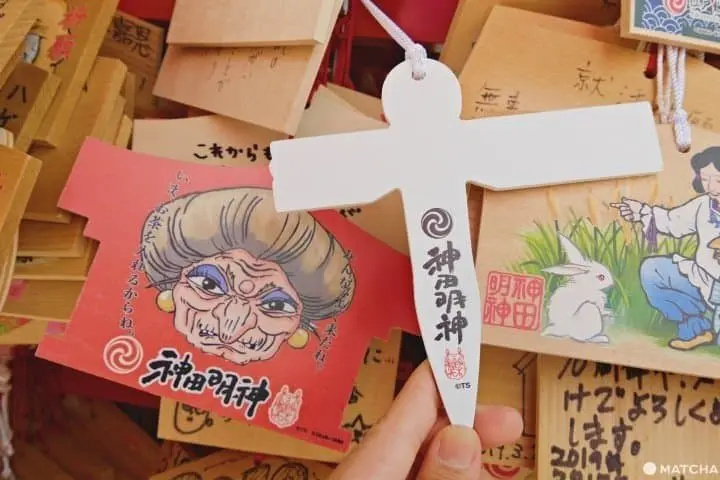Make a Wish at a Shrine! How to Dedicate an Ema Plaque

This article will detail how to dedicate an ema (traditional Shinto plaque) when visiting a shrine.

At Japanese shrines, there is a mysterious corner where tons of wooden tablets are hung overlapping each other.
These traditional Shinto plaques are called ema, and shrine visitors dedicate them to make their wishes come true. This article describes the history of ema and how to dedicate these votive plaques at a shrine.
Granting All Types of Wishes
Since ancient times, dedicating an ema (wooden votive plaque) has been a unique religious ceremony in Japan. But there's no need to be formal when dedicating these traditional Shinto plaques.
If you get close to an ema, you'll see wishes written on the back of these wooden tablets. Each ema has its own wish, from the "well-being of our family" to "academic success." Some well-wishers even hope to "make up with my ex-boyfriend" or "debut as a manga artist."
Japanese people directly write their wishes on the plaques and dedicate them to gods. This is a popular form of prayer visible on the shrine grounds.

But some overseas visitors may wonder, "I am not Japanese and somewhat hesitant to pray to Japanese deities." Or others may ponder, "Can I write wishes in my own language?"
Another common concern is "I don't know how to buy an ema or write wishes and hang it."
There's no need to worry! Anyone, including overseas visitors, can easily make wishes on an ema.
The History of Ema
Firstly, why is this prayer plaque called an ema (literally "drawn horse")? By observing it closely, you'll notice that a horse is drawn on each one. As a matter of fact, the Japanese dedicated actual horses to gods as their vehicles in ancient times.
However, it was a heavy burden for people to dedicate a horse for a wish. Likewise, it was also not easy for the shrine to take care of those horses dedicated by worshipers.
So, the custom of dedicating a drawn horse or "ema" in Japanese began in exchange of a real horse.
Different Types of Ema
Today, there is a wide variety of ema in different shapes and designs.
As pictured above, you can even find an ema designed like a shrine's gate or torii (see photo below).

There's even an ema that resembles the magical white fox deity at Fushimi Inari Shrine in Kyoto.

Additionally, there is an array of ema, including plaques illustrated with a cow instead of a horse or with a torii. It would be interesting to see what type of ema are adorning the shrine ground you visit!
How to Dedicate an Ema
It is quite easy to dedicate an ema.
First, pick up an ema provided at the shrine and place the specified fee in the offertory box. Some shrines may require you to buy them at a shrine office.

Then write these details on the back:
- Your Wish
- Address
- Name
- Date of Shrine Visit

Pens are provided for worshipers free of charge. It is also not necessary to write your wish and personal details in Japanese.
In fact, you can see many overseas visitors who wrote their wishes in their native language on ema plaques.

As long as you write from your heart, the gods don't care how many words or which language you write down. There's usually nothing written or drawn on the front side of the ema. But since there are no rules, you can write additional messages or draw something.
Some people draw playful pictures that match the original one on the front (see photo below).

Once you've written or drawn on the plaque, hang your ema in the nearest dedication area. This completes the process of dedicating an ema.

In a previous article at Fushimi Inari Shrine, I was able to purchase an ema on my own to dedicate my prayers.
You can effortlessly dedicate an ema whenever or however you want. If you are interested in visiting a Japanese shrine, I recommend offering a prayer on your own original ema!
平成生まれ。兵庫県在住。法務関連の出版社で書籍編集の仕事をしています。


































![[Coupon Available] Attention Overseas Winter Sports Fans! Nagano's Sports Depot Has Evolved](https://resources.matcha-jp.com/resize/720x2000/2026/01/05-254819.webp)
![[2 hours from Tokyo ] 10 Quiet and Breathtaking Views of Mount Fuji in Yamanashi Hokuto City , Yamanashi - Part 2](https://resources.matcha-jp.com/resize/720x2000/2025/12/16-253037.webp)

![[Reopening in March 2026] Ikoma Sanjo Amusement Park Park, 45 minutes from Osaka , with free admission](https://resources.matcha-jp.com/resize/720x2000/2024/08/28-194409.webp)